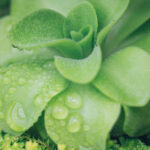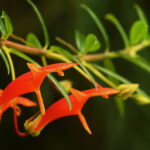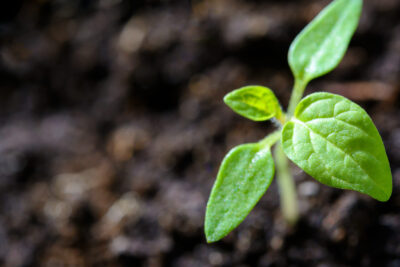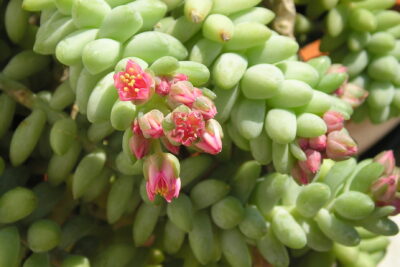
Choosing the Best Succulent Varieties for Your Garden

When it comes to gardening, succulents have gained immense popularity in recent years. Known for their unique shapes, vibrant colors, and low maintenance requirements, succulents are the perfect choice for both experienced gardeners and beginners alike. Whether you have a large outdoor garden or a small indoor space, succulents can add a touch of beauty and tranquility to any environment.
We will explore the world of succulents and provide you with a guide on how to choose the best varieties for your garden. We will discuss the different types of succulents available, their specific care needs, and the ideal growing conditions for each variety. Additionally, we will provide tips on how to propagate succulents, so you can expand your collection and share the joy of these unique plants with others. By the end of this article, you will have all the knowledge you need to create a stunning succulent garden that will thrive for years to come.
- Research different types of succulents that thrive in your climate
- Consider the size and shape of the succulents to ensure they fit well in your garden space
- Choose succulents with different colors and textures to create visual interest
- Look for succulents that are low-maintenance and easy to care for
- Consider the specific growing conditions required by each succulent variety
- Select succulents that are disease-resistant and less prone to pests
- Consult with local nurseries or gardening experts for recommendations
- Experiment with different succulent varieties to find the ones that work best for your garden
- Frequently Asked Questions
Research different types of succulents that thrive in your climate
When it comes to choosing the best succulent varieties for your garden, it's important to consider the climate in which you live. Succulents are known for their ability to thrive in various environments, but different varieties have different temperature and humidity preferences. Conducting research on the specific types of succulents that are well-suited to your climate will help ensure their success in your garden.
Here are a few steps to help you research the best succulent varieties for your climate:
- Identify your climate zone: Start by determining your climate zone. This will give you a better understanding of the general temperature range and weather conditions in your area. You can find this information online or consult with a local gardening expert.
- Consider temperature fluctuations: Succulents have varying temperature preferences. Some can tolerate freezing temperatures, while others thrive in warmer climates. Take note of the temperature fluctuations in your area throughout the year to ensure the succulents you choose can withstand these changes.
- Assess sunlight and shade: Succulents generally love sunlight, but the amount of sun exposure they need can vary. Some varieties prefer full sun, while others thrive in partial shade. Evaluate the amount of sunlight your garden receives in different areas throughout the day to determine which succulents will be the best fit.
- Consider humidity levels: While succulents are known for their ability to tolerate dry conditions, some varieties prefer higher humidity levels. Research the average humidity in your area to choose succulents that will be comfortable in your garden.
By taking the time to research different types of succulents that thrive in your climate, you'll be able to create a garden that not only looks beautiful but also ensures the long-term health and vitality of your plants. Remember to consider your climate zone, temperature fluctuations, sunlight and shade, and humidity levels when selecting the best succulent varieties for your garden.
Consider the size and shape of the succulents to ensure they fit well in your garden space
When choosing succulent varieties for your garden, it's crucial to consider the size and shape of the plants. Succulents come in various sizes, ranging from tiny rosettes to large, sprawling species. Understanding the size and shape of the succulents will help you determine how they will fit into your garden space and create a visually pleasing arrangement.
 Popular Succulent Varieties: Exploring Selections in a Pagoda Village
Popular Succulent Varieties: Exploring Selections in a Pagoda Village1. Rosette Succulents:
Rosette succulents are characterized by their compact, circular growth habit. They form tight clusters of leaves that resemble the shape of a rosette. These succulents are perfect for adding interest to small corners or filling gaps in your garden. Examples of popular rosette succulents include Echeveria, Sempervivum, and Graptopetalum.
2. Spiky Succulents:
If you're looking to add some texture and height to your garden, spiky succulents are an excellent choice. These succulents feature long, pointed leaves or stems that add a dynamic and architectural element to your outdoor space. Some popular spiky succulents include Agave, Aloe, and Sansevieria.
3. Trailing Succulents:
If you have hanging baskets or want to create a cascading effect in your garden, trailing succulents are the way to go. These varieties have long, trailing stems that drape gracefully over the edges of containers or rock walls. They can also be used as ground cover or to soften the edges of pathways. Popular trailing succulents include Sedum morganianum (Burro's Tail), Senecio radicans (String of Bananas), and Sedum rupestre (Angelina Stonecrop).
4. Compact Succulents:
 Discover the Beauty of Yellow Flowering Succulent Ground Cover Plants
Discover the Beauty of Yellow Flowering Succulent Ground Cover PlantsCompact succulents are perfect for small gardens or containers. They have a dense growth habit and tend to stay small in size, making them ideal for limited spaces. These succulents are also great for creating arrangements and tabletop gardens. Some popular compact succulents include Haworthia, Crassula ovata (Jade Plant), and Gasteria.
5. Architectural Succulents:
For a bold statement in your garden, consider adding architectural succulents. These varieties often have unique shapes, colors, or patterns that make them stand out. They can serve as focal points in your garden or be combined with other succulents to create eye-catching arrangements. Examples of architectural succulents include Agave victoriae-reginae (Queen Victoria Agave), Euphorbia tirucalli (Pencil Cactus), and Kalanchoe luciae (Paddle Plant).
By considering the size and shape of succulents, you can create a well-designed garden space that showcases their unique characteristics. Whether you prefer rosettes, spiky plants, trailing varieties, compact species, or architectural gems, there is a succulent variety out there that will perfectly fit your garden.
Choose succulents with different colors and textures to create visual interest
Succulents are a popular choice for garden enthusiasts due to their unique colors and textures. When choosing succulent varieties for your garden, it's important to consider the visual interest they can bring to your outdoor space.
One way to create visual interest is by selecting succulents with different colors. Some succulents have vibrant hues like deep reds, bright yellows, and intense purples, while others have more subtle shades such as soft greens, silvers, and blues. By mixing and matching succulents with various colors, you can create a visually stunning garden that catches the eye.
Another factor to consider is the texture of the succulents. Some succulent varieties have smooth, glossy leaves, while others have rough, textured surfaces. By incorporating succulents with different textures, you can add depth and dimension to your garden. Pairing smooth succulents with rough ones creates an interesting contrast that can elevate the overall aesthetic of your outdoor space.
 Find the Perfect Pink Flowering Succulent Vine
Find the Perfect Pink Flowering Succulent VineAdditionally, you can play with the sizes and shapes of the succulents to further enhance visual interest. Some succulents have rosette-shaped leaves, while others have long, trailing stems. By mixing succulents with different sizes and shapes, you can create a visually dynamic garden that is visually appealing from every angle.
To summarize:
- Choose succulents with different colors to add vibrancy to your garden.
- Consider the texture of the succulents to add depth and dimension.
- Play with the sizes and shapes of the succulents for a visually dynamic garden.
By carefully selecting succulent varieties with different colors, textures, sizes, and shapes, you can create a garden that is not only visually appealing but also a delight to the senses.
Look for succulents that are low-maintenance and easy to care for
When choosing succulents for your garden, it's important to look for varieties that are low-maintenance and easy to care for. Succulents are known for their ability to store water in their leaves, stems, or roots, making them incredibly resilient and drought-tolerant. However, not all succulents are created equal when it comes to ease of care.
One of the best options for beginners is the Echeveria genus, which includes a variety of beautiful rosette-shaped succulents. Echeverias are hardy, adaptable, and come in a wide range of colors and sizes. They require minimal watering and can thrive in both indoor and outdoor environments.
If you're looking for a unique and eye-catching succulent, consider the Kalanchoe genus. Kalanchoes are known for their vibrant and long-lasting blooms, which come in various shades of red, orange, pink, and yellow. They are relatively low-maintenance and can tolerate different light conditions.
 Unusual Colors in Succulent Foliage: Are Pink Leaves Normal?
Unusual Colors in Succulent Foliage: Are Pink Leaves Normal?Sansevierias, also known as Snake Plants or Mother-in-law's Tongue, are excellent choices for those who tend to forget about watering their plants. These succulents have thick, fleshy leaves that store water efficiently, allowing them to survive in dry conditions. Snake Plants are also known for their air-purifying properties, making them a popular choice for indoor environments.
Sedum is another genus that offers a wide variety of succulents suitable for different garden styles and preferences. Sedums are drought-tolerant and often have unique foliage and flower colors. Some popular sedum varieties include the "Autumn Joy" sedum, which displays stunning pink flowers in the late summer and fall, and the "Dragon's Blood" sedum, known for its deep red foliage.
When selecting succulents for your garden, it's also important to consider their specific light and water requirements. Some succulents thrive in full sun, while others prefer partial shade. Additionally, certain succulents are more tolerant of overwatering, while others prefer to dry out between waterings. It's always a good idea to research the specific needs of the succulent varieties you're interested in before making your final decision.
In conclusion, choosing the best succulent varieties for your garden involves considering their maintenance requirements, as well as your specific preferences and gardening conditions. Whether you opt for Echeverias, Kalanchoes, Sansevierias, Sedums, or any other succulent genus, incorporating these low-maintenance beauties into your garden will surely add a touch of uniqueness and beauty to your outdoor space.
Consider the specific growing conditions required by each succulent variety
When choosing succulent varieties for your garden, it is important to consider the specific growing conditions required by each plant. Succulents come in various shapes, sizes, and colors, each with its own unique needs. By understanding these requirements, you can create an environment that allows your succulents to thrive and flourish.
1. Sunlight
One of the key factors to consider is the amount of sunlight each succulent variety needs. Some succulents, such as Echeverias and Sedums, prefer full sun and require at least six hours of direct sunlight per day. On the other hand, certain varieties like Haworthias and Sansevierias thrive in partial shade and can tolerate lower light conditions.
2. Watering
Watering is another crucial aspect to consider when selecting succulent varieties. While succulents are known for their ability to store water in their leaves, different varieties have different water requirements. Succulents like Aloe Vera and Agave prefer infrequent watering and well-draining soil, whereas others like Crassulas and Kalanchoes may require more frequent watering.
 Top Choices: Popular Flowering Succulent House Plants for Your Home
Top Choices: Popular Flowering Succulent House Plants for Your Home3. Temperature
Succulents are generally adaptable to a wide range of temperatures, but some varieties have specific temperature preferences. For example, Sempervivums and Sedums are cold-hardy and can withstand freezing temperatures, while Euphorbias and Aloes prefer warmer climates and may not tolerate frost.
4. Soil Type
The right soil type is crucial for succulent growth. Most succulent varieties require well-draining soil to prevent root rot. A mixture of regular potting soil and coarse sand or perlite works well for many succulents. However, some varieties, like Lithops and Conophytums, prefer sandy or rocky soil with excellent drainage.
5. Growth Habit
Consider the growth habit of the succulent varieties you choose. Some succulents, such as Echeverias and Haworthias, form rosettes, while others like Crassulas and Sedums have trailing or upright growth habits. Understanding the growth habits will help you plan your garden layout and create visually appealing arrangements.
By considering these specific growing conditions required by each succulent variety, you can make informed choices and create a thriving succulent garden. Remember to research each variety thoroughly and provide the necessary care to ensure the long-term health and beauty of your succulents.
Select succulents that are disease-resistant and less prone to pests
When choosing succulent varieties for your garden, it is important to consider their susceptibility to diseases and pests. Opting for disease-resistant succulents can save you a lot of time and effort in the long run. Additionally, selecting varieties that are less prone to pests will help maintain the overall health and appearance of your garden.
Here are some disease-resistant succulent varieties that you can consider:
 Discover a Diverse Selection of Vibrant Colored Succulent Plants
Discover a Diverse Selection of Vibrant Colored Succulent Plants- Agave: Agave plants are known for their hardiness and resistance to diseases. They can withstand harsh weather conditions and are less likely to be affected by pests.
- Echeveria: Echeverias are popular succulents that come in a wide range of colors and shapes. They are generally disease-resistant and can thrive in various growing conditions.
- Sedum: Sedums are versatile succulents that are resistant to many diseases. They are easy to grow and require minimal maintenance.
On the other hand, some succulent varieties are more prone to pests. These include:
- Mealybugs: Mealybugs are common pests that can infest succulents. Some succulent varieties, such as Kalanchoe, Aeonium, and Crassula, are more susceptible to mealybug infestations.
- Aphids: Aphids can cause damage to succulents by sucking the sap from the leaves. Certain varieties like Cotyledon and Crassula are particularly attractive to aphids.
- Spider mites: Spider mites are tiny pests that can create webbing on succulent leaves. Varieties like Euphorbia and Aloe are known to be susceptible to spider mite infestations.
By choosing disease-resistant succulents and being aware of the varieties that are more prone to pests, you can create a healthy and thriving succulent garden.
Consult with local nurseries or gardening experts for recommendations
When it comes to choosing the best succulent varieties for your garden, it's always a good idea to seek advice from local nurseries or gardening experts. These professionals have knowledge and experience specific to your region, and can provide valuable insights on which succulent varieties thrive in your local climate.
Local nurseries often carry a wide selection of succulent varieties that are well-suited to the specific conditions of your area. They can recommend varieties that are drought-tolerant, heat-resistant, or cold-hardy, depending on the climate of your region. Additionally, they may be able to provide guidance on the care and maintenance of different succulent species.
Gardening experts, such as horticulturists or experienced succulent enthusiasts, can also be great resources for choosing the best succulent varieties. They may have firsthand experience growing a variety of succulents and can offer recommendations based on their personal successes and failures.
It's important to consult with local nurseries or gardening experts because they understand the unique challenges and opportunities of gardening in your specific area. They can help you select succulent varieties that will not only survive but thrive in your garden, ensuring a successful and beautiful display of succulents.
 Low-Water Succulents: Discovering Thin-Leafed Varieties
Low-Water Succulents: Discovering Thin-Leafed VarietiesExperiment with different succulent varieties to find the ones that work best for your garden
When it comes to creating a beautiful garden, succulents are an excellent choice. These low-maintenance plants not only add a unique touch to your outdoor space but also thrive in a variety of conditions. With so many different succulent varieties available, it can be challenging to decide which ones will work best for your garden. However, by experimenting with different varieties, you can find the perfect succulents that will enhance the beauty of your outdoor space.
Consider the climate and sunlight conditions
Before selecting succulent varieties for your garden, it's essential to consider the climate and sunlight conditions of your location. Some succulents thrive in hot and arid climates, while others prefer cooler temperatures. Similarly, certain varieties require full sun exposure, while others can tolerate partial shade. By understanding the specific needs of each succulent variety, you can create an environment that promotes their growth and longevity.
Choose a mix of colors, shapes, and sizes
Succulents come in a wide range of colors, shapes, and sizes, making it a fun and exciting experience to mix and match them in your garden. From vibrant hues of green, blue, and purple to unique shapes like rosettes and trailing vines, there is a succulent variety for every preference. Consider selecting a mix of succulents with different colors, shapes, and sizes to create a visually appealing and dynamic garden display.
Explore the versatility of succulent varieties
One of the most exciting aspects of succulents is their versatility. They can be planted in various ways, including individual pots, hanging baskets, or even as ground cover. Some succulent varieties are perfect for creating vertical gardens or adding interest to rockeries and terrariums. By exploring the different ways in which succulents can be incorporated into your garden, you can unleash your creativity and design a unique outdoor space.
Consider maintenance requirements
While succulents are generally low-maintenance plants, it's important to consider their specific care requirements. Some varieties may need more frequent watering, while others are more drought-tolerant. Additionally, certain succulents may require occasional pruning or repotting. By understanding the maintenance needs of each variety, you can ensure that your garden remains healthy and thriving.
Research and seek advice from experts
If you're unsure about which succulent varieties will work best for your garden, don't hesitate to do some research or seek advice from gardening experts. There are countless online resources, books, and forums dedicated to succulents that can provide valuable insights and recommendations. Additionally, local nurseries or gardening centers often have knowledgeable staff members who can assist you in choosing the best succulent varieties for your specific needs.
Remember, choosing the best succulent varieties for your garden is a personal decision. Experimenting with different varieties and exploring their unique characteristics will not only help you create a beautiful outdoor space but also deepen your appreciation for these remarkable plants.
 Unveiling the Special Qualities of Dolphin Succulent
Unveiling the Special Qualities of Dolphin SucculentFrequently Asked Questions
1. What are some popular succulent varieties for a garden?
Some popular succulent varieties for a garden include Echeveria, Sedum, Aloe, and Crassula.
2. How often do succulents need to be watered?
Succulents generally need to be watered every 1-2 weeks, depending on the climate and the specific succulent variety.
3. Can succulents survive in low light conditions?
While most succulents prefer bright sunlight, there are some varieties that can tolerate low light conditions, such as Sansevieria and Haworthia.
4. Do succulents require special soil or fertilizer?
Succulents thrive in well-draining soil, so using a mixture of potting soil and sand or perlite is recommended. Fertilizing once or twice a year with a balanced succulent fertilizer can also help promote healthy growth.
If you want to read more articles similar to Choosing the Best Succulent Varieties for Your Garden, you can visit the Varieties and Colors category.






You Must Read